Garage Door Only Opens a Few Inches? Why & Fixes
Author: Omar Alonso | Editor: Omar Alonso
Review & Research: Jen Worst & Chris Miller

You step out onto the driveway on a cold winter morning and climb into the car to drive to work. The thought of starting the engine and running the heater to warm the cabin leaves you feeling nice and toasty. You press your remote and the garage door only opens a few inches...
You close it to try again, hitting the button on your remote again, and it only opens a crack. Now what? You try it again with the same result for a third time. Great. You're going to be late for work. What's causing this issue? Is it a simple fix, or will you need to call the local handyman for help?
Let's go over everything you need to know about why a garage door opens a little then stops and how to fix it.
8 Reasons Why Your Garage Door Only Opens A Few Inches
Most of us take our electronic types of garage doors for granted until it stops working. When it fails, we quickly realize how much of a hassle this problem can cause in our daily lives. Unfortunately, if the garage door opener only moves a few inches, there could be several reasons for the problem, and not all of them are easy fixes.
1) Flat or Low-Power Remote Battery
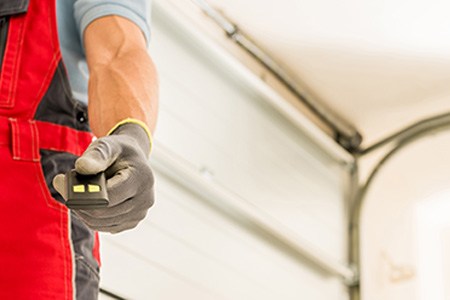
The first thing to check is the garage door remote. When was the last time you replaced the battery? Weak battery power interferes with the signal strength sent to the door, resulting in the problem. Here's how to replace the battery on many common remote types. It should be pretty simple for you, regardless.
You'll find the door works fine if you replace the batteries. However, many garage door openers require special size batteries, and you might not have one around the house. Make sure you're pressing the button down completely. On my own, I have to hold it down for about one second before it begins to act.
2) Power Failure
If there's a power failure in the neighborhood affecting your home, it means the garage door is running on battery power. If the door opener battery is dysfunctional or old, it might not have the charge required to open the door the entire way, resulting in the problem at hand. You'll have to take the battery in for a service or replace it.
3) Sensor Problems
Most modern garage doors use a built-in reversing mechanism that reverses the door if it hits something while closing or anything steps between the garage door laser sensors. This feature stops the door from closing on the roof of your car when you exit the garage, preventing damage to the roof and paint.
The sensors can get dirty, causing the issue, too. Take a cloth and clean the sensor and learn how to align your garage door sensors if they get bumped. This is a very common reason a garage door only opens a few inches and is an easy fix. It could be a simple as a bug being in the way or you could have a problem that the yellow sensor light indicates.
4) Broken or Stretched Springs
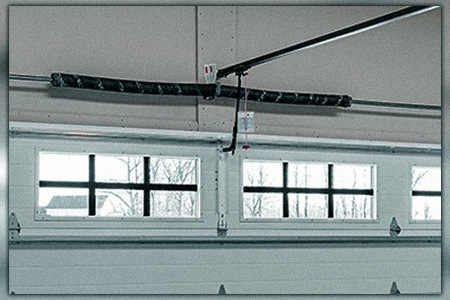
Most older models of automatic garage doors feature spring mechanisms to assist with opening and closing the door. Over time, these springs lose their resilience, causing issues with the door tracking and efficient opening and closing.
Most electric garage doors come with a manual pull cord that disconnects the door from the drive motor, allowing you to open it manually. Pull the cord and try to open the door. If it feels heavy when sliding it open, you could have a problem with the springs.
The springs are dangerous to handle if you don't know what you're doing. So, if it looks like it's the cause of the problem, call a professional for help.
5) Binding Issues
There could be binding in the mechanism interfering with its operation when the garage door opens. Bound doors are hard to open or close, and you'll have to adjust the force or travel limit.
The travel limit controls the length of opening and closing during operation. The force limit controls the pull required to open the door. The owner's manual for the garage door should stipulate the correct travel and force settings and how to adjust these factors.
Typically, there are two or three methods of adjusting the force and travel limits. You'll either push the colored buttons found somewhere on the door operating mechanism or turn the screws on the unit. Search the manufacturer's website for instructions if you can't find your owner's manual, or reference this webpage for visual instructions on how to handle it.
After you finish making the necessary adjustments, ensure the reverse mechanism on the door functions properly.
6) Track Misalignment
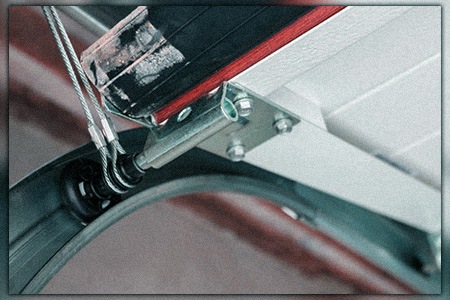
If the door gets stuck when opening, you could be dealing with issues involving the track alignment. If the tracking rails get bent, it creates tension on one side of the door, throwing it out of alignment.
Use a rubber mallet to beat the track back into the correct position. The wheels running in the channels might also be out of alignment. If that's the case, you'll need to adjust or replace them, depending on their condition.
7) Issues With the Logic Control Board
The logic control board receives the signal from the remote to open or close the door. There might be other signals in the area interrupting with the correct function of the control board, resulting in the issue.
Or there might be obstructions interfering with the range of the remote or obscuring the signal from the remote. If the board is faulty, you'll need to replace the logic control board. In some cases, you can repair the problem with a simple reboot of the system. Sadly, this can be an expensive reason a garage door only opens a few inches if you end up needing to buy a replacement.
8) Cold Weather Contraction
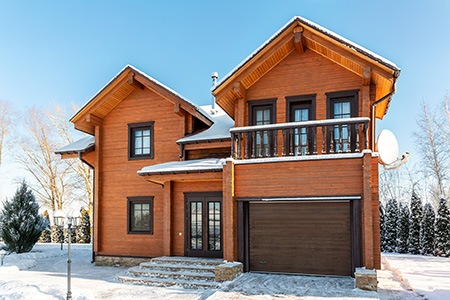
The issues mentioned above can occur in the summer and the winter. However, if your garage door sticks or fails to open properly during the winter, it's probably because the metal rails contracted due to the cold. Metal shrinks in cold temperatures.
If you live in a very cold region of the United States, it could cause crimping around the wheels in the track, resulting in the door sticking or failing to open properly. You can usually resolve this issue by lubricating the track and wheels, removing the friction from the wheels as they run along the track.
Lubricate the springs, hinges, and other metal components in the door. Lubricating the springs should free things up. Most garage door tracks and railings come greased to ensure proper lubrication of the parts. However, the grease might harden in very cold climates, causing the door to stick or fail to open.
Ensuring the door is properly maintained usually removes the risk of it sticking or failing to open. If you live in a cold climate, ensure you have a contractor maintain and refurbish the door before the winter arrives. If you live in a warmer region, have them look at the door every other year to prevent any problems.
Tips for Winterizing the Garage Door
As mentioned, the cold winter weather is the most common cause of the garage door sticking or failing to open. Winterizing the door in preparation for the winter goes a long way to ensure you don't have to deal with the hassle of a stuck door when the cold weather arrives.
Start your maintenance by wiping down the garage door components. If any of the rollers or hinges look stuck or stiff, remove them and soak them in a solvent. Scrub the parts to remove any hardened grease or debris and replace them.
Lubricate the bearings and pulleys to ensure smooth operation and spray WD40 into the rollers track and hinges to ensure smooth operation of these parts.
In some cases, the shrinking of the metal might mean you have to manually open and close the garage door during the coldest winter months. This happens even to garage door alternatives, so there's not going to be much escaping it.
FAQ’s on Why a Garage Door Opener Only Moves a Few Inches
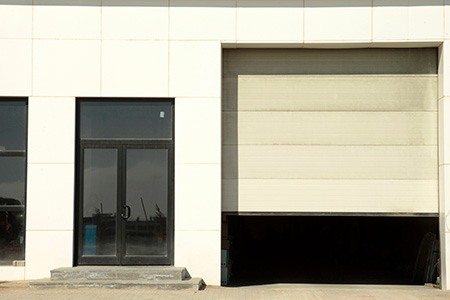
This conversation is never as simple as “my garage door opens a little then stops”. There’s always more details and more questions. Let’s cover those now.
What Happens if My Garage Door Opens Halfway & Gets Stuck?
There might be a screw or bolt protruding in the track, causing the door to catch when it opens. Switch the door to manual operation and inspect the track for debris or obstructions.
What Do I Do if the Tension Springs in the Garage Door Are Broken or Damaged?
You'll need to replace them. This isn't a DIY job; you'll need to call a professional. Working with the springs yourself could cause a bad accident, so leave it to the pros.
Where Do I Get a Replacement Sensor for My Garage Door?
Replacement sensors are available from the manufacturer. However, you might need assistance with wiring and calibrating them, requiring professional help.
What Causes the Garage Door to Open & Close Slowly?
In most cases, the door isn't lubricated properly. Check for hardened grease in the tracks and lubricate the rollers, springs, and hinges to see if it makes a difference. The cold winter weather can also cause this problem. The metal tracks shrink in the cold weather, causing a tight grip on the rollers that slows the door's operation.
Why Is My Garage Door Squeaking When it Opens & Closes?
This problem can occur if the tracks are misaligned, un-lubricated, or if they contract under cold weather.
What Is the Best Lubricant to Use on a Garage Door?
We recommend using silicone-based lubricants in your garage door maintenance. You want to avoid options that will collect dust and create a thicker paste.
That's Why Your Garage Door Only Opens a Few Inches
This issue surrounding your garage door may seem complex, but usually there's only one cause and you can find it by going through our list of 8 causes above, eliminating them one at a time. Most of the causes are pretty simple to solve and are very obvious that they are the problem once you look for them. That's why a garage door only opens a few inches with guidance on how to solve it. Good luck!



